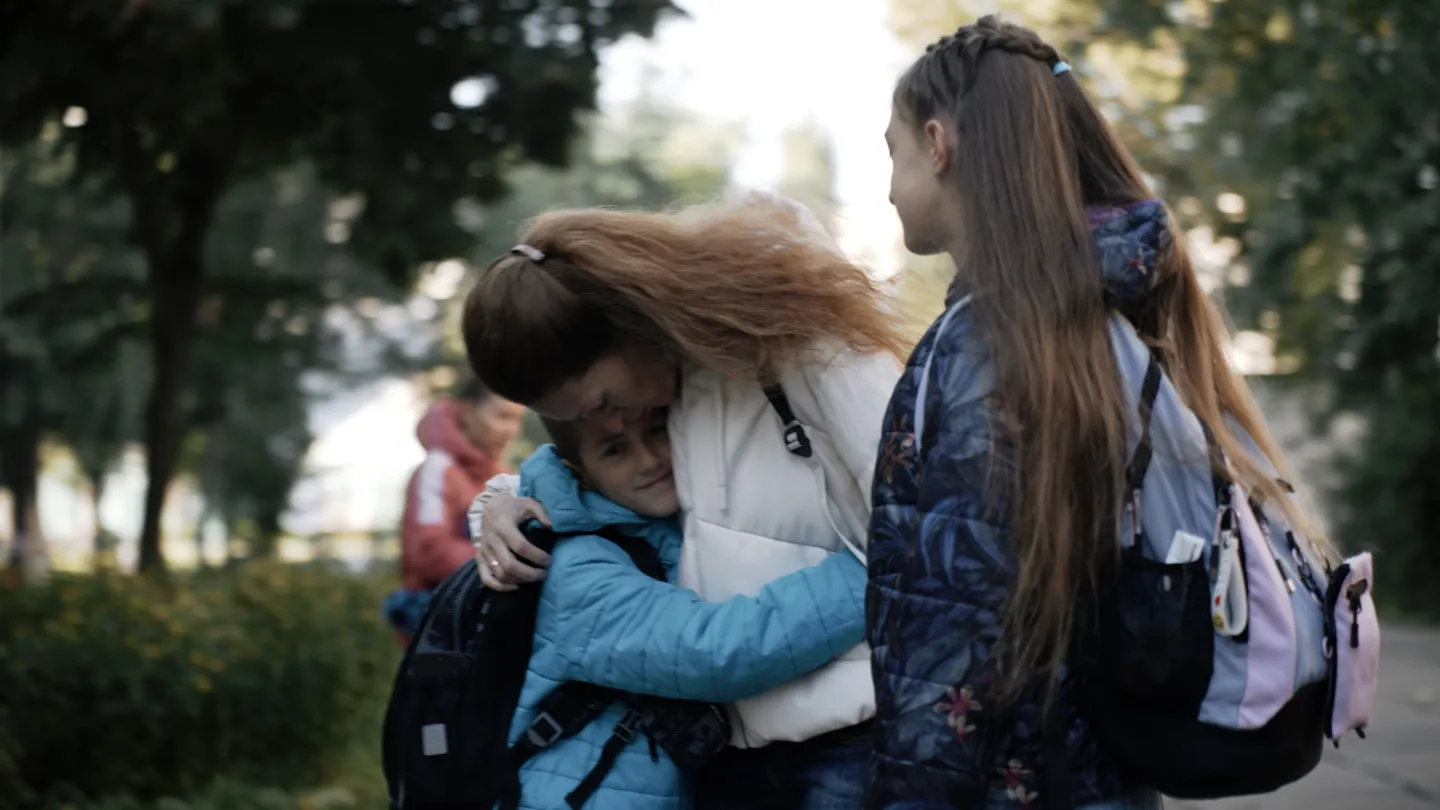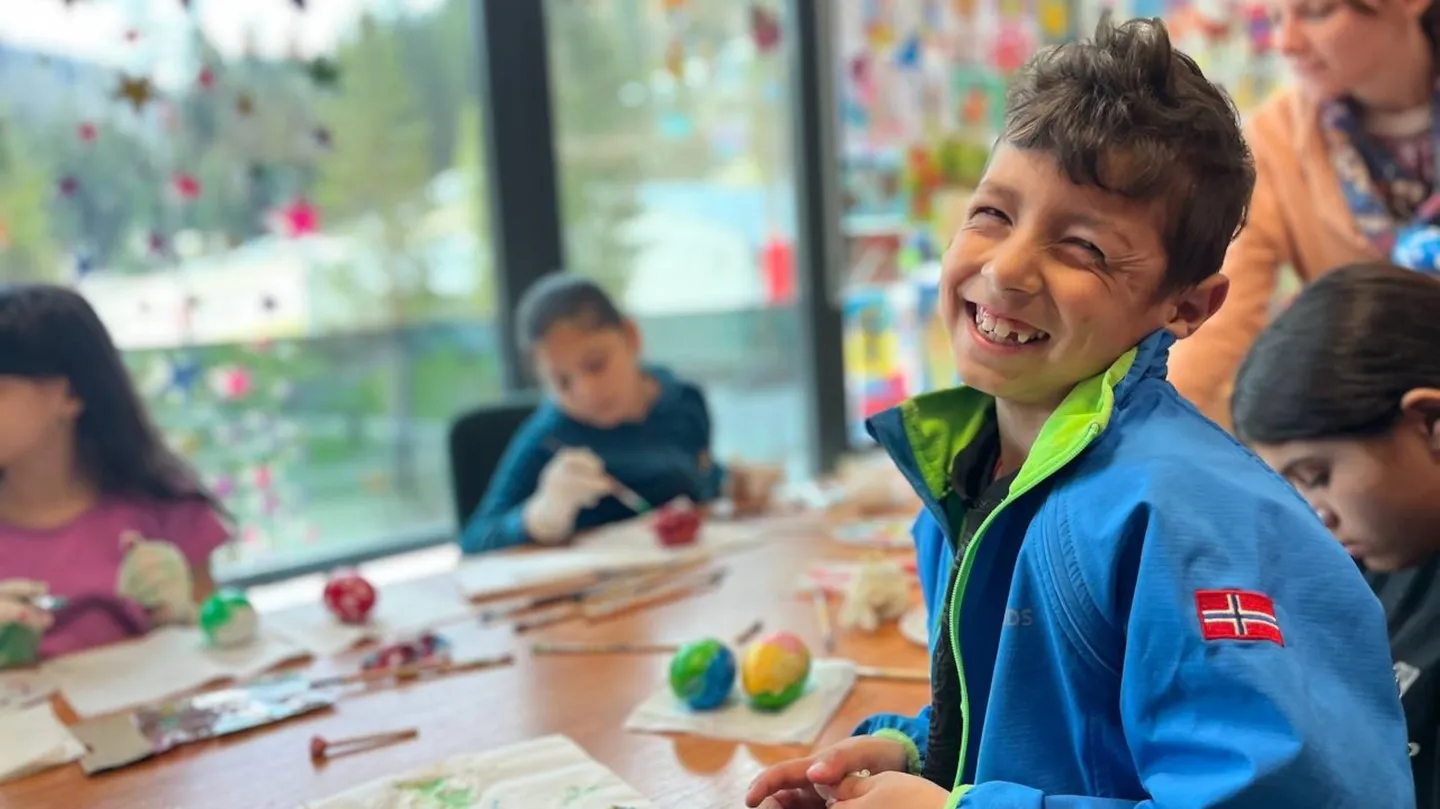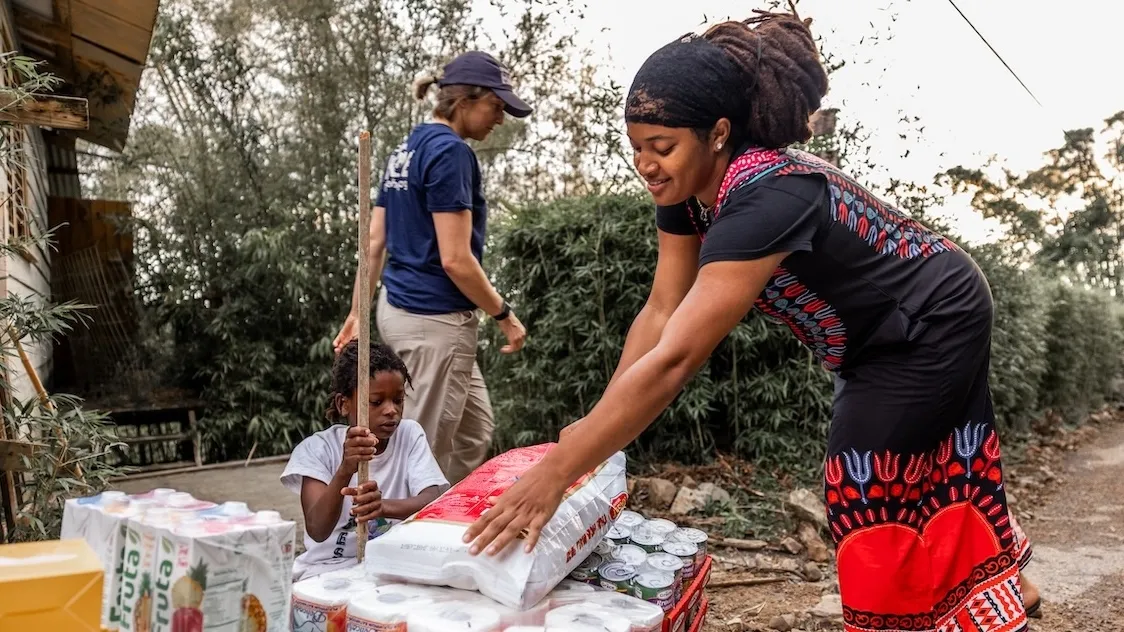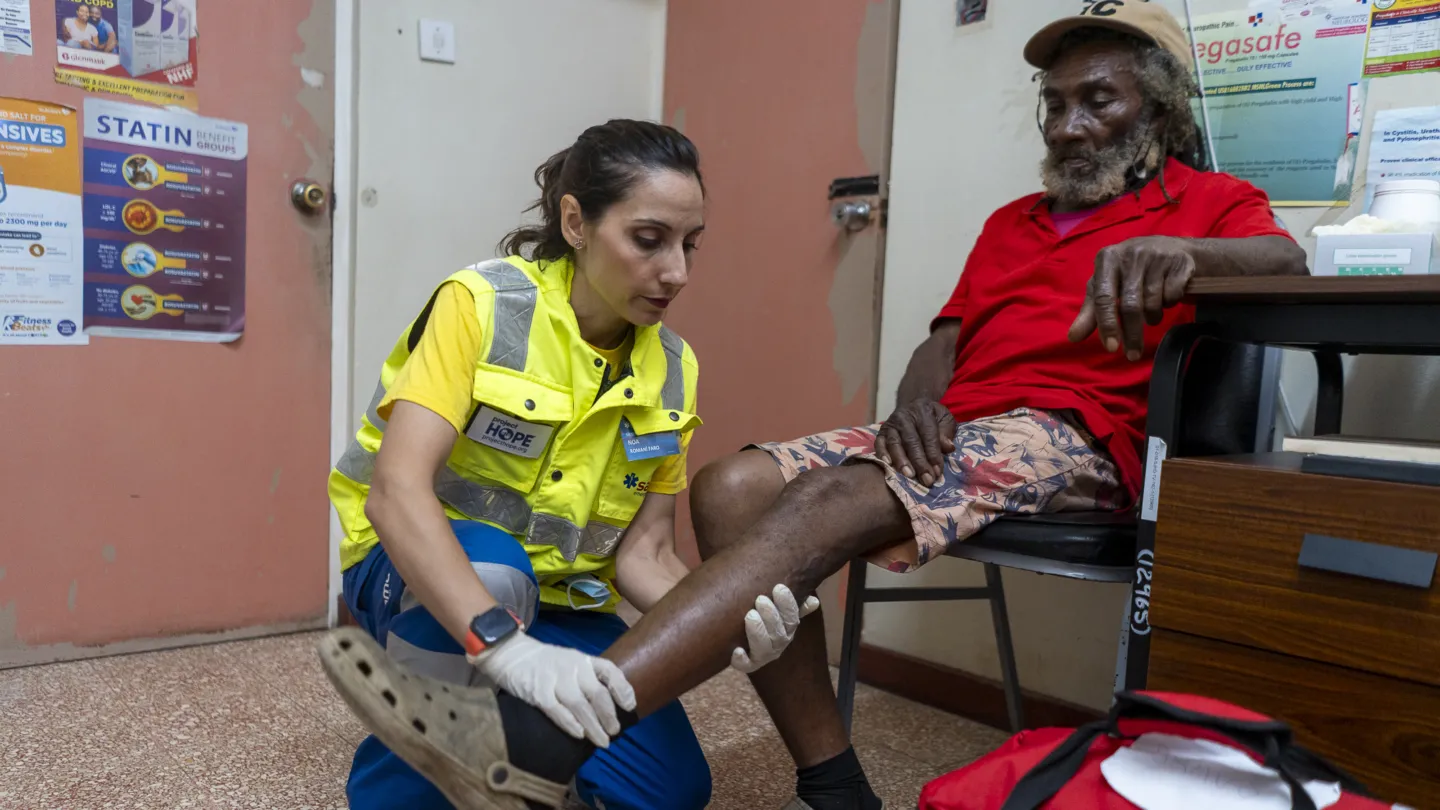Antonina’s Journey from Occupation to Helping Others Heal
Antonina escaped occupation and found support at Project HOPE’s psychosocial center in Kyiv, Ukraine. Now she’s helping others like her rebuild their lives.
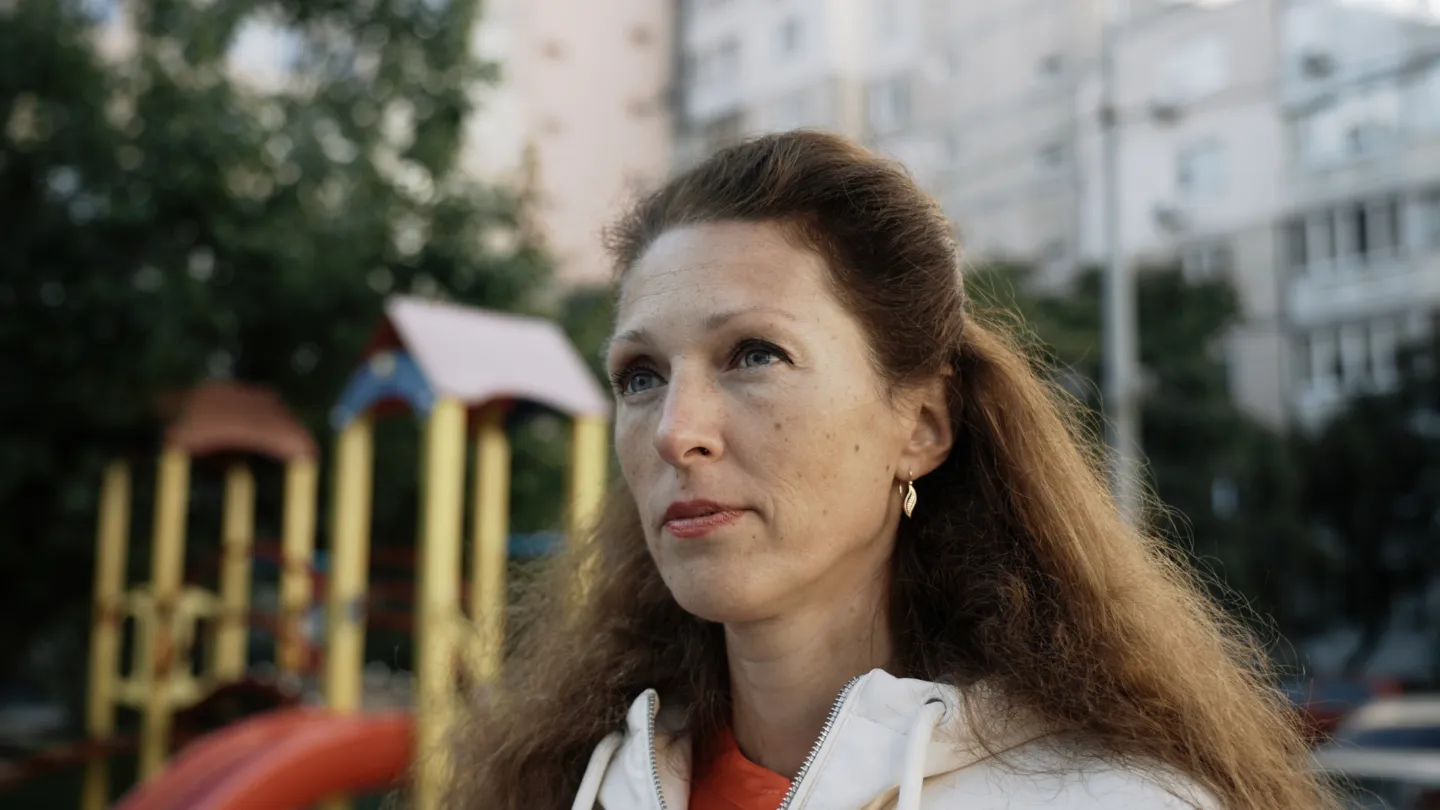
When Antonina’s family finally reached the “gray zone” on their way out of occupied territory, the car sank in the dirt and stopped. Shelling began.
A stranger appeared with a tow rope. Her husband shouted, “Get in!” She remembers standing in a haze, clutching the rope, the world moving in slow motion until the engine caught and the tires bit into the road again.
That night, after more checkpoints, searches, and questions, they made it to Zaporizhzhia. Five days later, with the car still half-broken, they decided to keep going. Returning wasn’t an option. They drove to Kyiv.
It had been months since Kherson fell under occupation. At first, like many, her family thought it would pass quickly. Prices for basic goods skyrocketed, ATMs ran dry, and soldiers in balaclavas patrolled the streets. Checkpoints multiplied, communication lines disappeared.
Her husband, a communications specialist, was repeatedly pressured by occupying forces to collaborate. Each time he refused, the threats grew more direct. “They knew where we lived, they knew we had two children,” Antonina recalls. “At some point, we understood they could come for us at any moment.”
That realization became the turning point — the moment they knew they had to leave, no matter the risk.
Beginning again in a city at war – but alive
Kyiv felt disorienting in its normalcy. People smiled, drank coffee, rode skateboards. Sirens sounded, but life continued. That contrast made the first weeks harder in a different way. Finding a school meant extra exams and paperwork in an already crowded system; navigating medical visits took persistence and patience; small daily frictions reminded them they were starting over in a new city.
Through it all, the children’s fear of uniforms slowly eased. On walks, her son would approach soldiers and ask, “Are you really with the Ukrainian Armed Forces? Do you know the code word, palianytsia?” referencing a type of Ukrainian bread that’s difficult for non-Ukrainians to pronounce, which became a symoblic way to verify a person’s identity. If they played along, he’d smile and give them a high-five. Over time, he learned that here, on this side, it was safe.
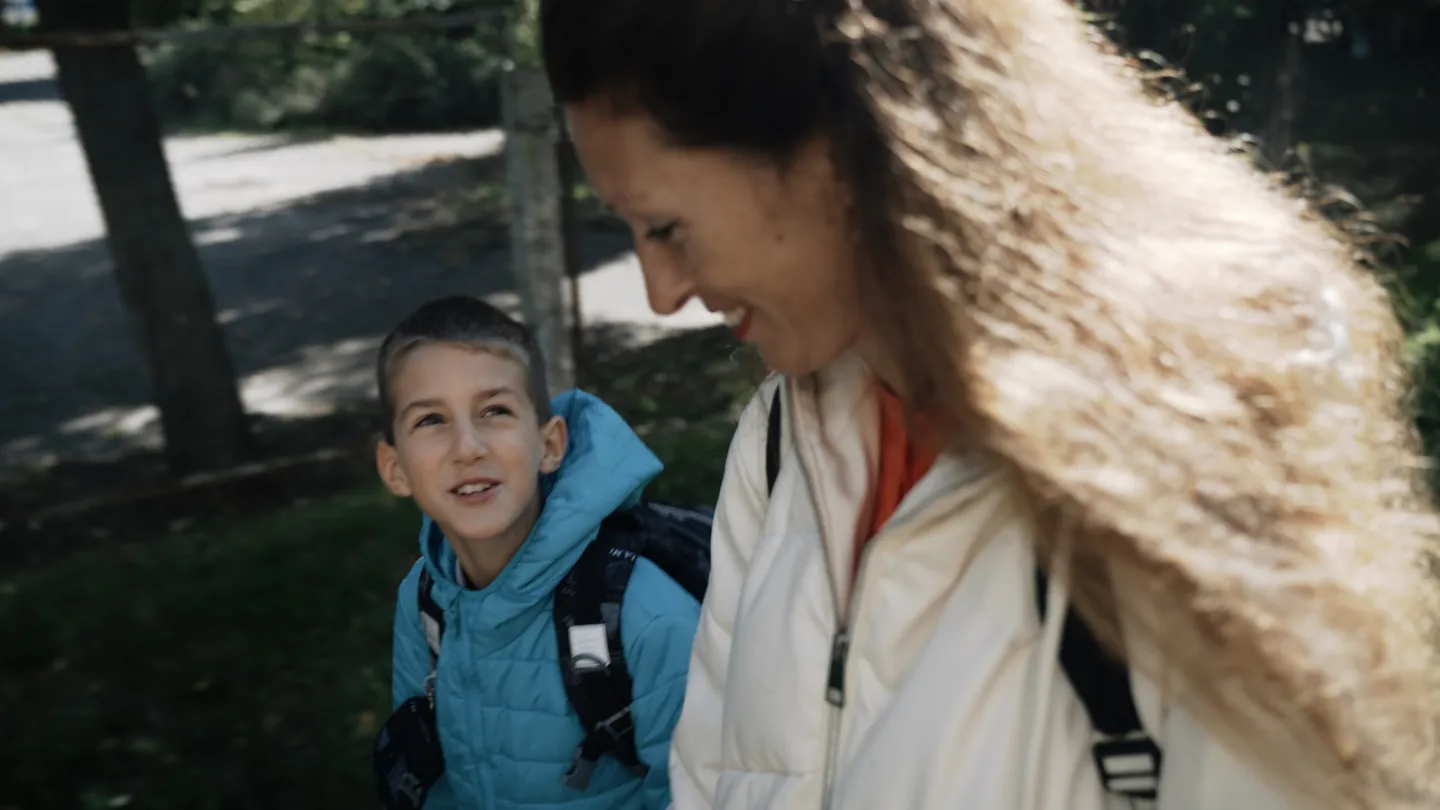
Finding a place to breathe
In 2023, Antonina heard that Project HOPE was opening a Mental Health and Psychosocial Support (MHPSS) center in their district. She brought her son to English lessons. Her daughter tried painting by numbers. Winter ended; the painting still needed finishing, so Antonina came too. Soon it wasn’t just classes, it was a weekly rhythm: art therapy, craft workshops, women’s circles, small celebrations that punctuated long seasons of sirens, rocket attacks, and news alerts.

The change was visible at home, especially for the kids. “Before the center, everything inside felt tense,” she says. “After, it got lighter. Walking down the street, they’d wave: ‘I know you! We had a class together!’ In a city where every corner was new and no relatives waited, that really mattered to us.”
From participant to staff member
Months later, a center psychologist pulled Antonina aside: Would she consider joining the team? By then, her days had a shape. Her husband had returned south to help restore communications after de-occupation. Kherson was liberated on November 11, 2022; he arrived at 5 a.m. the next morning to work. The children were in school. Antonina had energy again — for herself as well as for them.
She said yes.
Since February 2024, Antonina has worked as a social worker at the center, leading activities for children and adults: embroidery, knitting, diamond mosaics, candle-making, crafting soft toys, painting mugs — small, tactile things that anchor hands while stories surface. “No one comes only to ‘make a picture’ or ‘knit socks,’” she says. “It’s about connection. We share news, cry sometimes, laugh often. People from Donetsk, Luhansk, Kherson, Nikopol — different places, same ache. And we leave with a little more strength.”
Some moments stay with her: the woman who sat silent after an overnight missile and drone attack on the city, the man who only needed someone to hold his hand, the group that lingered long after class to celebrate a birthday with tea and candies.
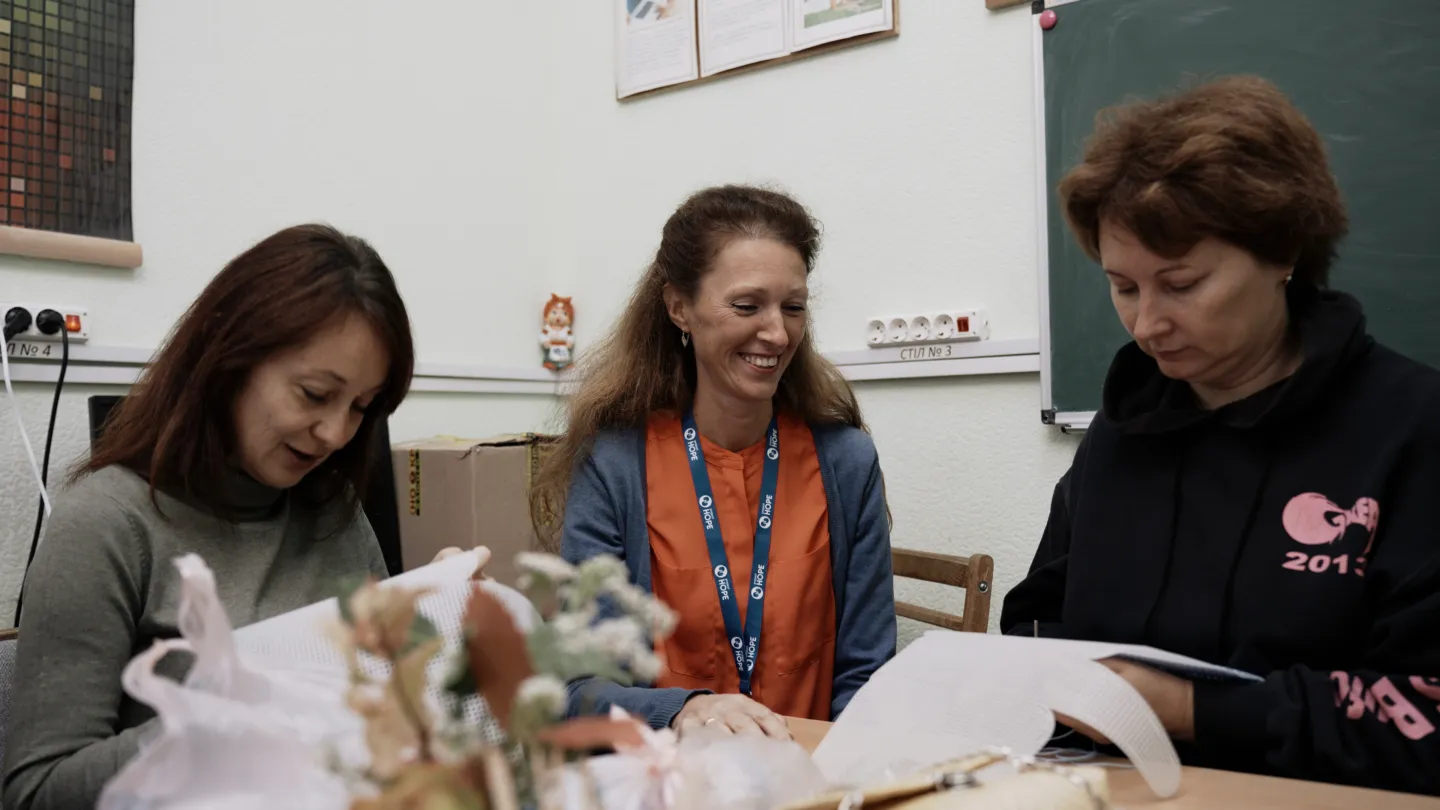
What healing looks like right now
Antonina doesn’t romanticize resilience. She keeps moving because movement keeps the dark thoughts away. “If we all sit and fold our arms — who, if not you?” she says. During long blackouts she braided camouflage netting by flashlight, with anger at the invaders and faith in victory. Volunteering — packing kits for soldiers and displaced families on the day Kherson was liberated — became a way to channel fear into action. Group therapy gave language to what silence had caged. Work gave her purpose.
Her children, too, have changed. They still worry about their father, but they understand why he is where he is. Air-raid sirens no longer bring panic, except when the blast is too loud, too close. And there’s the ordinary magic of childhood: English lessons, new friends, the pride of making a toy with your own hands. “Even if you’ve never done it before,” she says, “you learn you can.”
Asked what she dreams about, Antonina doesn’t hesitate: “A peaceful, happy childhood for my kids. Our family in one place. Freedom to travel without permits. A country where children aren’t afraid of loud sounds.”
Since the full-scale invasion, millions of Ukrainians have been displaced within their own country. Daily life is braided with uncertainty, grief, and logistical strain, from housing and paperwork to school transitions and interrupted care. Under these conditions, mental health support is not a “nice to have” — it’s essential. Evidence-based MHPSS, delivered in familiar, low-barrier spaces by trained staff, helps people process trauma, rebuild social ties, and regain a sense of agency.
Project HOPE’s centers in Ukraine offer exactly that: a mix of group and individual support; safe, activity-based spaces for children; art therapy and women’s circles; psychoeducation; and practical classes that restore routine and dignity. The model is deliberately local and relational – neighbors helping neighbors, guided by professionals — so that people like Antonina can move from receiving support to providing it, multiplying the impact.
Antonina’s story — months under occupation, then liberation, followed by continued bombardment in Kyiv — is not background; it’s the climate she and her family breathe. And yet her story isn’t only about loss. It’s about a child smiling again, about the kindness of a stranger with a tow rope, about a room in Kyiv where someone will pour you tea, hand you a needle and thread, and listen until your breathing slows.
